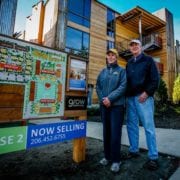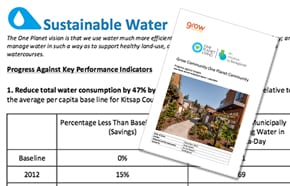The most comfortable retirement home is your own home.
On this point, older Americans widely agree: three-quarters surveyed say their number one goal is to stay in their own home as long as possible, in the familiar environment of connections, routines, heirlooms, memories, and friendships.
Independent living is a primary concern for both the older generation and their adult children, studies show. As we become older, it does become more difficult to move around the house, this is where some accidents can happen. When living alone, it can be even more dangerous as no one will know if anything does happen. This is why a lot of older people do eventually decide to move into an independent living community, like La Posada, where they can experience the benefits of living alone, whilst also having people on-site to help them if they need it. These communities are often ideal for people who may have retired alone, giving them the opportunity to make new friends and live with minimal help. These communities often come with housing that makes daily living easy and accessible for residents, as they have multiple mobility and accessibility options. For instance, you can see how assisted bathing solutions could help you here.

“Aging in place” has become the mantra for “baby boomers” and those who follow, describing a long-term goal once aspirational and now, at Grow Community, quite reachable.
“From a real estate perspective, we are seeing that boomer are a group that expects sustainability, community, and simplicity and wishes to live those values,” says Greg Lotakis, Grow Community development manager. “I believe that many of our buyers want to ‘live intentionally in a community,’ and it seems they are choosing to invest in a place where they can enjoy aging in place while living intentionally.”
Maintaining a healthy generational mix is a foundational goal of the Grow project.
Helping residents age in place — and keeping older homeowners an active, vital part of the social blend — guides the layout and amenities. Long-term accessibility is being built into new Grove and Park neighborhoods from the ground up.
That starts with single-level living in most units, keeping bedrooms, kitchen, bathrooms and utility space united on a single floor. Residents will have no cumbersome trips up and downstairs throughout the day.
On the outside, elevators connect underground parking areas with the entryways of each home.

Asani LLC, hired to develop Grow Community, worked to provide as much of the accessibility options into the design as possible. Features like Walk-in showers large enough for seating, open floor plans with minimal hallways, and taller comfort toilets are standard design elements at Grow Community. These can be enjoyed at any age and have been identified as key to independent living.
Grow Community is in the vanguard among residential projects bringing innovative strategies for independent living to market.
Situated in the heart of Winslow town center, Grow homes are close to grocers, restaurants, merchants and professional services, eliminating the need for regular automobile use.
A community center will allow neighborhood activities, while being flexible enough to fit the communities own programming desires. The eight-acre grounds boast spacious community gardens and gathering places.
Together these amenities fulfill goals identified by Congress in 2006 with reauthorization of the Older Americans Act, which urged locally based initiatives to meet aging citizens’ needs including services, social opportunities and recreation.
“It’s all part of our goal to create an intergenerational community, which has been our thinking from the beginning,” Lotakis says.
Aging in place also makes sense for seniors for whom long-term financial independence is a paramount concern.

The average cost of residence in an assisted living facility, for one bedroom and single occupancy, is approaching $40,000 per year, the Association for the Advancement of Retired Persons reports – a prohibitive amount for fixed-income seniors, who have already spent years building up equity in their own home.
The multigenerational family under one roof is another American trend.
A significant number of older residents have had a grown son or daughter, often with children of their own, move back in. In these families, the younger generations themselves become a resource for aging in place – not an option if their elders have moved into retirement homes or assisted living facilities.
With spacious two- and three-bedroom floor plans, Grow Community’s new Grove and Park neighborhoods anticipate these needs for a range of homebuyers, beginning with those in middle age who are looking to downsize and settle in for the long term.
For those already in their senior years, Grow Community offers some very good reasons to move just one more time.















 Did you know:
Did you know:





 Grow Community joins the effort to promote our island’s pollinator populations through the Pollinator Improvement Plan (PiP), now under way at Commodore Options School.
Grow Community joins the effort to promote our island’s pollinator populations through the Pollinator Improvement Plan (PiP), now under way at Commodore Options School.

 The multiage curriculum will include mapping of local bee habitats and production of a “Bee’s Eye View” video, to promote bee-friendly planting at homes and neighborhoods throughout the island.
The multiage curriculum will include mapping of local bee habitats and production of a “Bee’s Eye View” video, to promote bee-friendly planting at homes and neighborhoods throughout the island.